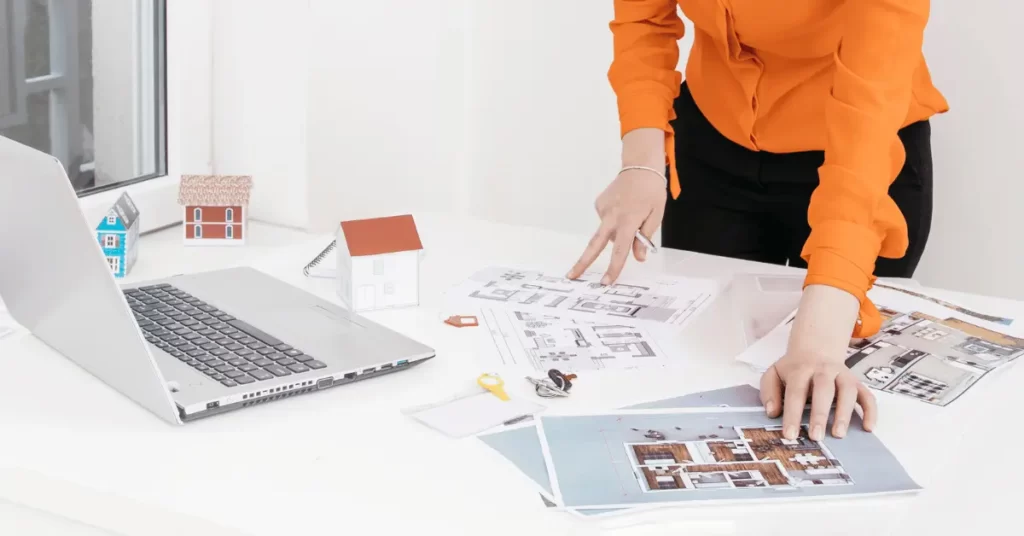The Interior Design Trends is in a perpetual state of evolution, constantly shaped by societal shifts, technological advancements, and changing consumer preferences. As we step into 2023, it’s essential to explore the prevailing market trends and forecast how they will influence the interior design landscape. From sustainable practices to the integration of technology, let’s delve into the transformative forces shaping the industry’s trajectory.

Interior Design Trends: Unveiling Sustainable, Technological, and Cultural Shifts
- Sustainable Sensibility
With a growing emphasis on environmental consciousness, sustainability has become a cornerstone of interior design. Clients are increasingly seeking eco-friendly materials, energy-efficient solutions, and designs that minimize their carbon footprint. Interior designers are incorporating biophilic design principles, integrating nature into spaces to enhance well-being. Expect to see a surge in reclaimed materials, upcycled furniture, and energy-efficient lighting, as sustainability continues to drive innovation in the field.
- Technological Integration
The marriage of technology and interior design is producing awe-inspiring results. From virtual reality (VR) and augmented reality (AR) tools that allow clients to visualize designs before implementation, to smart home systems that automate and personalize living spaces, technology is redefining the way designers interact with both their craft and clients. As AI-driven solutions become more sophisticated, they’ll assist in predicting design trends, enhancing customer experiences, and optimizing space utilization.
- Flexible and Multi-Functional Spaces
The traditional concept of rooms is undergoing a paradigm shift. As remote work and versatile lifestyles gain prominence, interior design is adapting to create multi-functional spaces that cater to various activities. Home offices that seamlessly blend with living areas, modular furniture that transforms to suit changing needs, and convertible rooms that shift from work to play illustrate the demand for flexibility. Interior designers must anticipate these evolving requirements and craft spaces that effortlessly adapt.
- Cultural Fusion
Cultural diversity is finding expression in interior design trends. As the world becomes more interconnected, clients are seeking designs that reflect their global perspectives and heritage. Fusion of styles, materials, and colors from different cultures is becoming increasingly popular. This trend presents an opportunity for designers to create unique, inclusive spaces that celebrate diversity and resonate with clients on a personal level.
- Wellness-Centric Design
In the wake of a global health crisis, wellness has taken center stage. Interior designers are now tasked with creating spaces that promote physical and mental well-being. Biophilic elements, ergonomic furniture, improved indoor air quality, and spaces that foster relaxation are gaining traction. The design industry is moving beyond aesthetics to prioritize the holistic health of occupants, aligning spaces with their emotional and physical needs.
Forecast
Looking ahead, the interior design industry shows no signs of slowing down. Rapid urbanization, the growing real estate market, and the desire for personalized spaces will continue to fuel demand for skilled interior designers. As sustainability remains a core concern, designers who can integrate eco-friendly practices into their projects will have a competitive edge. Similarly, those who adeptly merge technology with design will enhance client engagement and project efficiency.
The role of the interior designer is evolving beyond aesthetics to encompass psychology, sustainability, and functionality. Designers will need to stay informed about the latest advancements, whether in sustainable materials, wellness research, or technological tools. Collaborations between interior designers, architects, and engineers will become even more essential to deliver seamless and innovative solutions.
Conclusion
The interior design industry is standing on the threshold of exciting possibilities. Market trends indicate a future where sustainability, technology, cultural diversity, flexibility, and wellness converge to shape transformative spaces. As interior designers navigate this dynamic landscape, they must embrace these trends, leverage emerging technologies, and commit to sustainable practices to craft environments that inspire, comfort, and elevate the human experience. By staying attuned to these market trends and forecasts, industry professionals can ensure their designs remain relevant, innovative, and influential.












